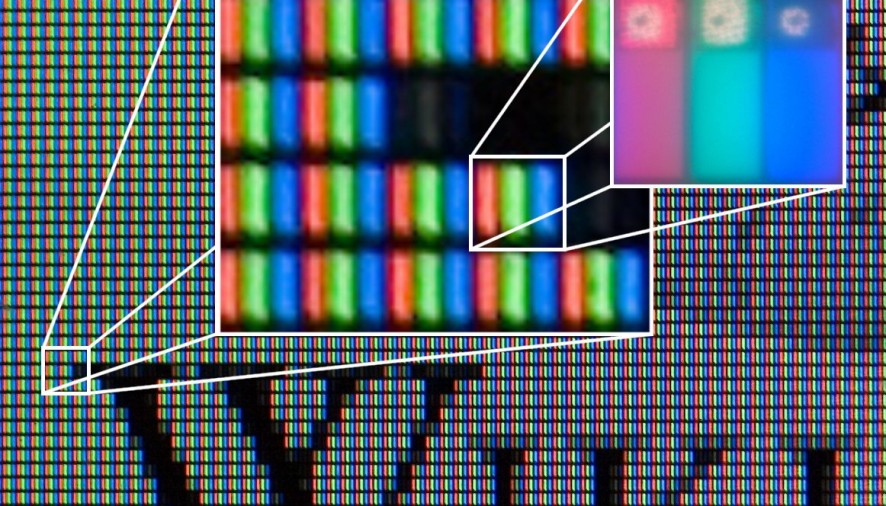Ultra-thin Liquid Crystal Display TVs (LCDs) are commonplace in many households, but how do they actually work and how will this new technology change our lives in the future?
Three weeks ago, Prof. Helen Gleesan gave a public lecture entitled “Looking through the Liquid Crystal Ball” in which she highlighting ongoing research and development in Liquid Crystal technology and how they could be implemented in new futuristic tech.
The three phases of matter are very well known: Solid, liquid and Gas. These phases are all temperature dependent. If you start with a cold solid block of ice, heat it up and it will melt to liquid water, continue heating and you will get steam. However, a less understand and more mysterious fourth state of matter exists; Liquid Crystals. The liquid crystal phase appears when the material does not melt directly from solid to liquid, it forms an intermediate liquid crystal phase.
The liquid crystal phase appears if the constituent molecules of the materials are ‘Rod-like’; long and thin. This rod-like structure means that the molecules order themselves, all pointing along the same orientation. This is known as a ‘Nematic Liquid Crystal’, which comes from the Greek ‘nematos’ meaning worm or thread.
Chirality plays a strong role in Liquid Crystal Devices (LCD). Chirality is when the mirror image of a molecule cannot be superimposed on the original. An excellent example of this is your hands, they are mirror images of each other but cannot be superimposed. This chirality of a liquid crystal causes them to stack in a helical structure, this is known as a ‘Chiral Nematic Liquid Crystal’.
When implemented in LCD TVs two main properties of liquid crystals are utilised; birefringence and dipoles. The birefringence is the difference between the horizontal and vertical refractive index. The refractive index defines the difference in the speed of light through the material. Light is made up of two parts; horizontal polarized light and vertical polarized light. When light passes through a matter that exhibits birefringence, the vertical and horizontal parts of the light wave travel at different speeds and become out of phase with each other.
Liquid crystals also often have a dipole, which means that one end of the molecule is positively charged whilst the other is negative. This means that when a voltage is applied across the liquid crystal sample, the molecules will orientate themselves to point along the electric field.
LCD TVs use an active matrix display; the screen is made up of lots of individual pixels, which in turn are made up of smaller pixels of Red, Green and Blue (RGB) that combine to make the pixel colour desired. Each of the smaller pixels of RGB are made up of individual Twisted Nematic Devices.
Twisted Nematic Devices are made up of three main components that for a liquid crystal sandwich. If we start with our first slice of bread which is a vertical polariser, this only allows the vertical element of the light to be passed through. This then passes through the mayonnaise which is just a layer of glass. Next comes our filling, the liquid crystals. Next we pass through another layer of mayonnaise and the final piece of bread which is a horizontal polarizer, which only lets horizontal components of light through.
The liquid crystals sandwiched in this device are chiral nematic, which means that as the light passes through, it becomes rotated. So the first slice of bread only allows vertical light to be passed through, this vertical light is then rotated by 90 degrees, meaning it can successfully pass through the second slice of bread. However, if we were to apply a voltage across the sample, the chiral structure would be broken and the light would no longer be rotated meaning it cannot pass through the final slice.
By adding a RGB colour filter onto these devices it is very easy to select which colours to allow light to pass through. You build up each pixel by applying voltage to stop some colour showing, and then not applying voltage to other colours and allow the light to shine through.
The main problem with current liquid crystal devices is that they are not fast enough. The switch rate on and off, is 1ms in the best displays which is faster than the eye can detect. Most displays are slower than than this though with response times of 5ms or more, making them unsuitable for competitive gaming or true 3D displays. Researchers are attempting to create molecules that are rod-like with a bend. This means that they are biaxial and it is predicted to have a switch time of <1ms around their shortest axis.
When Prof. Gleesen looked through her liquid crystal ball, she highlighted a very interesting future use of liquid crystal technology. As people get older their eyesight starts to deteriorate and they develop what is commonly known as “long arm syndrome”. By creating contact lenses with a liquid crystal layer it is possible to change the refractive index of the layer using an applied voltage and therefore the focal point. This means that you can switch from long to short vision without having to change contact lenses or glasses. The switches have been ±2D when less than 3V is applied to the liquid crystal.
There is also hope that liquid crystals could be implemented as food expiry date sensors, sensing when the food is too old or has been exposed to high temperatures
This technology is still very much in development with teams of people testing and researching liquid crystals. This new state of matter has revolutionised many technologies, who knows what it will change next.
Ethan Jull
Image: Wikipedia

